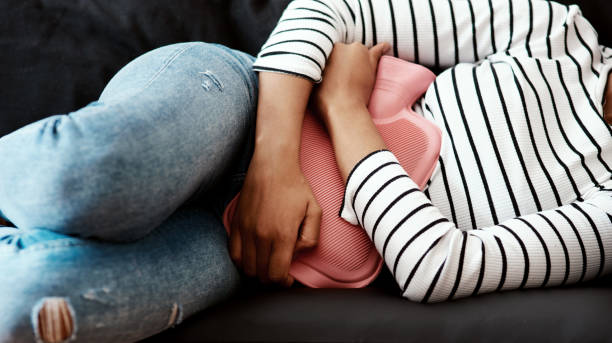

Monday To Saturday-
Morning- 10.30 am To 01:00 pm |
Evening- 6.30 pm to 09:00 pm
call us
+91 9869719413

Period problems in females, also known as menstrual disorders, are a common issue that many women experience. Menstrual disorders can include a variety of symptoms, such as heavy bleeding, cramping, and irregular periods. For girls, the onset of menstruation is a sign of growing up. It usually begins at the same time as other physical changes, such as the onset of breast development or pubic hair growth. Most often, this period begins at the age of 13, but it can also start at any age from nine to fifteen. There may also be other, more serious menstrual problems. Bleeding that is too heavy or too light, or a complete absence of a cycle, may indicate that additional problems are causing the irregular menstrual cycle. A typical menstrual cycle can mean different things to different women, so keep that in mind. Your normal cycle may not be normal for another woman.
One of the most common period problems is heavy bleeding, also known as menorrhagia. This occurs when a woman's period is particularly heavy or prolonged, and can lead to anemia, fatigue, and difficulty carrying out daily activities. Menorrhagia can be caused by a variety of factors, including hormonal imbalances, fibroids, and endometriosis. Another common period problem is dysmenorrhea, or painful cramps. These cramps can range from mild to severe, and can be caused by a variety of factors, including hormonal imbalances, endometriosis, and pelvic inflammatory disease. Treatment options for dysmenorrhea include nonsteroidal anti-inflammatory drugs (NSAIDs), birth control pills, and heating pads.
Irregular periods, also known as oligomenorrhea, can also be a problem for some women. This occurs when a woman's periods are infrequent or unpredictable. Irregular periods can be caused by a variety of factors, including hormonal imbalances, thyroid disorders, and polycystic ovary syndrome (PCOS). Treatment options for irregular periods include birth control pills and hormone therapy. Other menstrual disorders include amenorrhea, which is the absence of periods, and premenstrual syndrome (PMS), which includes a variety of symptoms that occur before a woman's period, such as mood swings, cramps, and headaches. Amenorrhea can be caused by a variety of factors, including pregnancy, breastfeeding, menopause, and certain medical conditions. PMS can be treated with a variety of methods, including lifestyle changes, over-the-counter pain relievers, and hormone therapy.
It is important to note that many menstrual disorders can be treated with a combination of medical and lifestyle changes. For example, women who experience heavy bleeding can try taking over-the-counter pain relievers, such as ibuprofen, to reduce cramps and bleeding. They can also try using heating pads to reduce cramps and pain. In addition, maintaining a healthy diet, getting regular exercise, and reducing stress can also help alleviate symptoms of menstrual disorders.
In conclusion, period problems in females are common issues that many women experience. These problems can include heavy bleeding, cramping, and irregular periods. There are a variety of factors that can contribute to menstrual disorders, and treatment options vary depending on the specific problem. In general, a combination of medical and lifestyle changes can help alleviate symptoms of menstrual disorders. If you are experiencing period problems, it is important to speak with your healthcare provider to determine the best course of treatment.